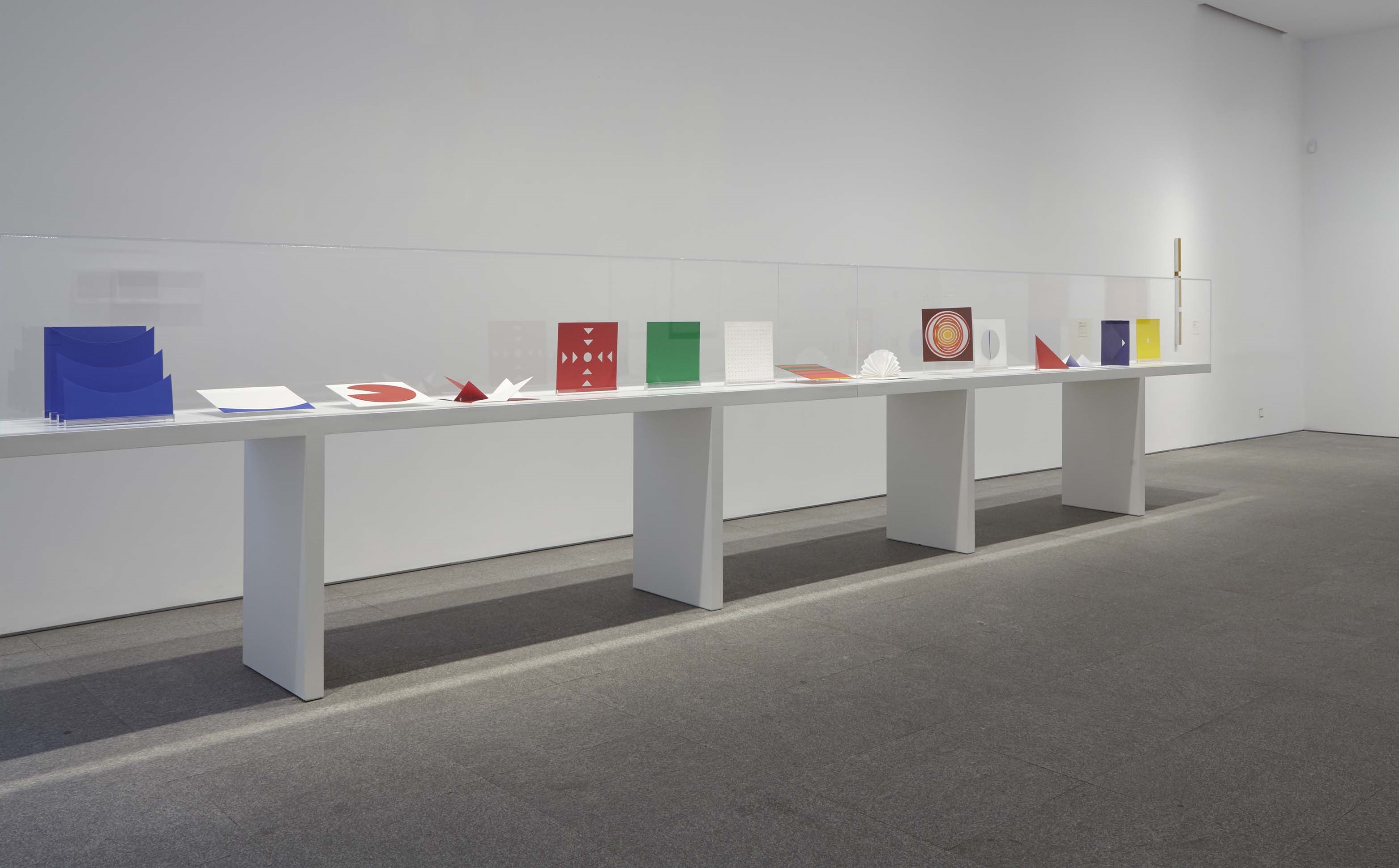
Brazil and the book as an object
In the 1950s Brazil was central to the renewal of the book as an object, and this practice was initially consolidated through the joint work between poets and artists linked to concrete poetry. The book became a structure that was open to semantic investigation, striving to explore new relationships between words and forms, between the writing process and reading.
The book became a structure that was open to semantic investigation.
The interest in this poetic and visual medium would prompt artists to approach the unabridged realisation of book-poems. These experiences were radicalised by artists associated with self-styled Neo-Concretism, including Lygia Pape, with the signatories of the Neo-Concrete Manifesto (1959) putting forward a poetic language based on the phenomenological approach to the artwork. Explorations into the abstract and pure geometric form, prevalent in Concretism, was instilled in a new sensorial, cosmic, procedural dimension, where the body and action went on to become the main agents of experimentation in the artwork.
Manifesto Neoconcreto, 1959

No início era tudo água

Depois as águas foram baixando, baixando, baixando

E baixaram

O homem começou a marcar o tempo

O homem descobriu o fogo

O homem era nômade e caçador

Na floresta

O homem era gregário e semeou a terra

E a terra floresceu

O homem inventou a roda
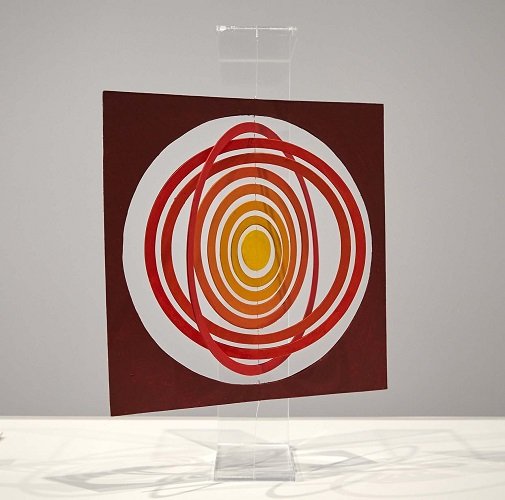
O homem descobriu que o sol era o centro do sistema planetário

Que a terra era redonda e girava sobre seu próprio eixo

A quilha navegando no tempo

O homem construiu sobre a água: palafita

Submarino: o vazado é o cheio sob a agua

Luz
No início era tudo água
Depois as águas foram baixando, baixando, baixando
E baixaram
O homem começou a marcar o tempo
O homem descobriu o fogo
O homem era nômade e caçador
Na floresta
O homem era gregário e semeou a terra
E a terra floresceu
O homem inventou a roda
O homem descobriu que o sol era o centro do sistema planetário
Que a terra era redonda e girava sobre seu próprio eixo
A quilha navegando no tempo
O homem construiu sobre a água: palafita
Submarino: o vazado é o cheio sob a agua
Luz
In the Beginning it Was All Water
The Water Later Went Down, Down, Down
And Down
Man Began to Measure Time
Man Discovered Fire
Man Was a Nomad and a Hunter
In the Forest
Man Was Gregarious and Sowed Seeds on the Land
And the Land Flourished
Man Invented the Wheel
Man Discovered that the Sun Was the Centre of the Planetary System
That the Earth Was Round and Rotated on its Own Axis
The Keel Navigating Through Time
Man Built on Water: A Stilt House
Submarine: The Excavation Is Full Under Water
Light
The Livro da Criação (Book of Creation)
Lygia Pape played a key role in the transformation of the book’s poetic dimension by virtue of the trilogy she began in 1959 and finished in 1963, comprising Livro da Criação (Book of Creation, 1959), Livro de la Arquitetura (Book of Architecture, 1959–60) and Livro do Tempo (Book of Time, 1961–63). The notions of creation, space and time were redefined by the Brazilian artist through Neo-Concrete hypotheses – in these works the word completely vanishes and the narrative is perceived sensorially.
In these works the word completely vanishes and the narrative is perceived sensorially.
Pape also broadened the notion of the book towards space and experience. Of the three books mentioned, the idea of participation is most active in the Livro da Criação, and the spectator becomes the central pillar of the pieces. Each of the book’s pages become autonomous and are modified by the reader/actor, who must construct and recreate the contents of a visual poem that narrates the creation of the world. Hélio Oiticica defined this book as an open creative unit comprising units understood as cells. According to Oiticica, it was pre-sensorial human history rather than human pre-history.
The Livro da Criação on the streets of Rio de Janeiro. Photographs by Mauricio Cirne, 1959








The Livro da Criação can be found at a midway point in the artistic career of Lygia Pape. On one hand, it shows the synthesis of her minimalist-style exploration, which is characterised by the concern with light that stretches across her nascent graphic work, for instance in Tecelares (Weavings), conserved in the Museo Reina Sofía Collection. On the other, she articulates the fusion of popular, ephemeral, spontaneous and playful aspects, specific traits which figured in later performances that were produced by taking over public space and featured the participation of dozens of people simultaneously. This playful attitude associated with the Livro da Criação became even more palpable in the photographs taken by Mauricio Cirne on the streets of Río de Janeiro. In these images Pape independently placed the pages of the book in situations loaded with humour and spirit: inside a crane, on a rock, in a children’s playground, etc. An action that could be interpreted as an attempt to breathe life into every structure in the Livro da Criação .
Texts by Lola Hinojosa, Head of Performative Arts and Intermedia Collection at the Museo Reina Sofía
Lygia Pape. Livro da Criação, 1959. Film stills
















































The book is now a piece of cloth where the reader will become entangled in the threads that stitch together the proposals, creating what I call “magnetised space”, a kind of internal will, an impulse belonging to a desire that flees from pure irrationality and transfers the pulse of the trick to the senses. You are now holding magnetisation.
Lygia Pape, A Chave do Livro, 1980
Lygia Pape

Lygia Pape (1927–2004) experimented with a wide array of mediums in her work, a strategy which responded to the need to broaden sensitivity, a predominant trait in Brazil at the end of the 1950s. With ties to Grupo Frente, she soon became associated with the Neo-Concretism movement alongside other artists, for instance Lygia Clark and Hélio Oiticica, or poets like Ferreira Gullar. In the 1970s she collaborated in Cinema Novo on various film productions (Glauber Rocha, Pereira dos Santos), designing title sequences and other visual recreations, an experience which would lead her to realise wide-ranging video works that were frequently related to her performances.
Worthy of attention are her books and her films for geometric objects in dance (Ballet neoconcreto, 1958), as well as the unclassifiable performance piece Divisor (1968), a textile work meant to be performed collectively. This creative compendium conveyed Pape’s constant attempt to stretch the limits of traditional arts. Eventually she managed to meld visual productions with the activities in the São Paulo Museum of Modern Art, teaching, and writing academic texts, which are instrumental to understanding her work and her vision of Neo-Concretism. From 1972 to 1985 Lygia Pape taught in the Department of Architecture and Urbanism at the University of Santa Úrsula in Río de Janeiro, and in 1983 she was appointed professor in the School of Fine Arts at the Federal University of Río de Janeiro.
The retrospective exhibition organised by the Museo Reina Sofía 2011 afforded her work greater visibility and the recognition it deserves and also enabled the work Livro da Criação to become part of the Museo Collection through the donation made by the artist’s daughter, Paula Pape.
The artwork cannot be conceived as a ‘machine’ or ‘object’, but rather a quasi-corpus; namely, as a being whose reality is not exhausted in the foreign relationships of its elements; a being which, upon possibly breaking up into parts through analysis, can only reach fulfilment with a direct, phenomenological approach.
Lygia Pape, A Chave do Livro, 1980
Interview with Paula Pape
Gallery view of Room 410 with the Livro da Criação
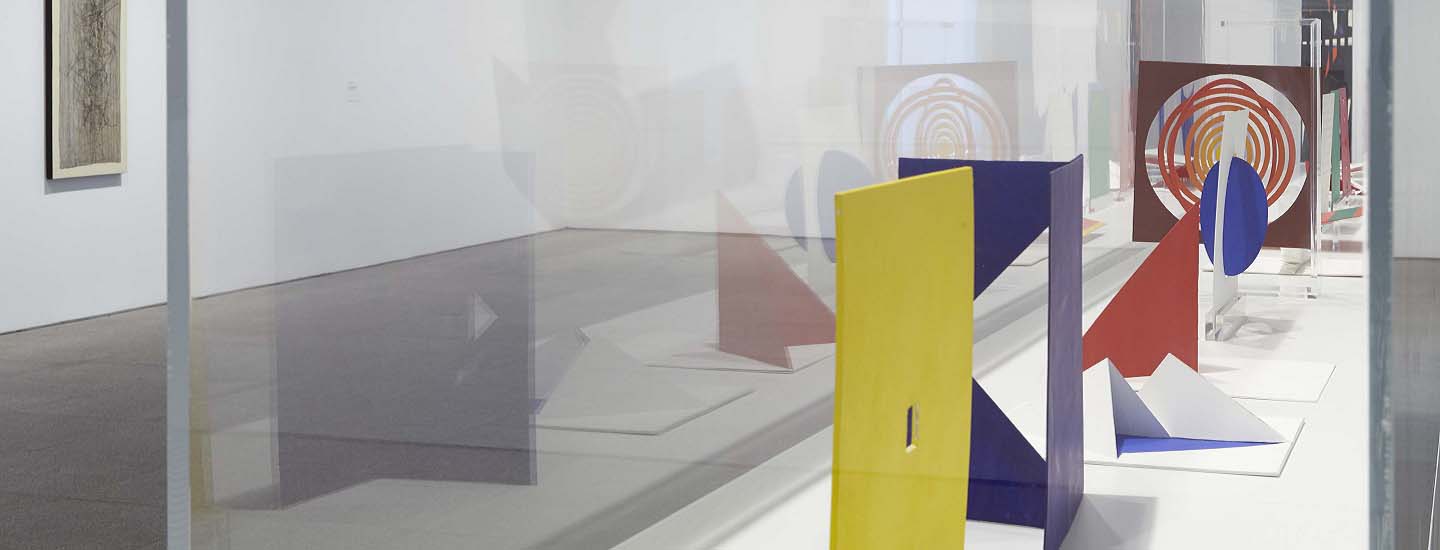
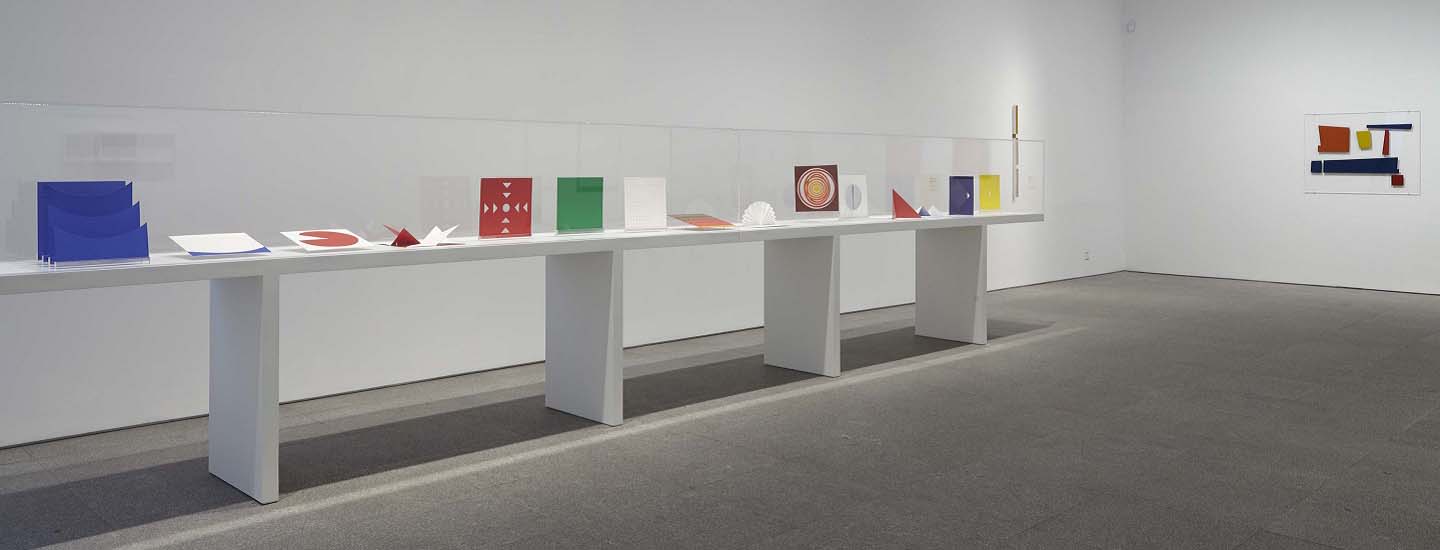
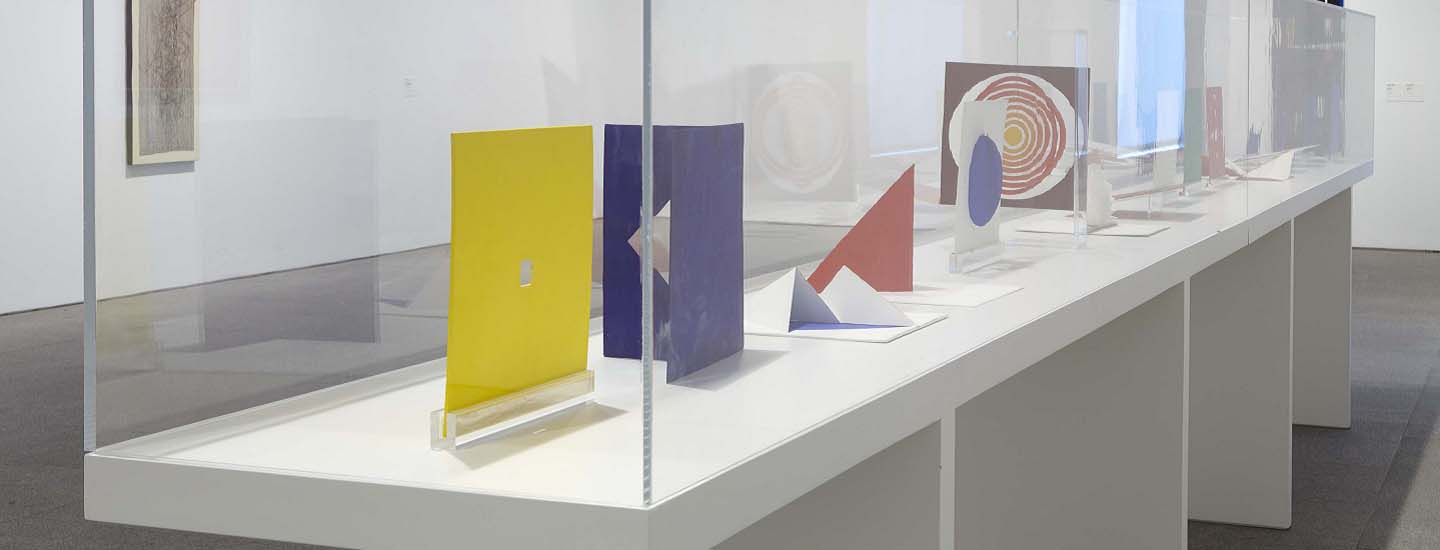
Plastic arts are useful for penetrating the world, primarily as subject matter for reflection and action.
Lygia Pape, A Chave do Livro , 1980
